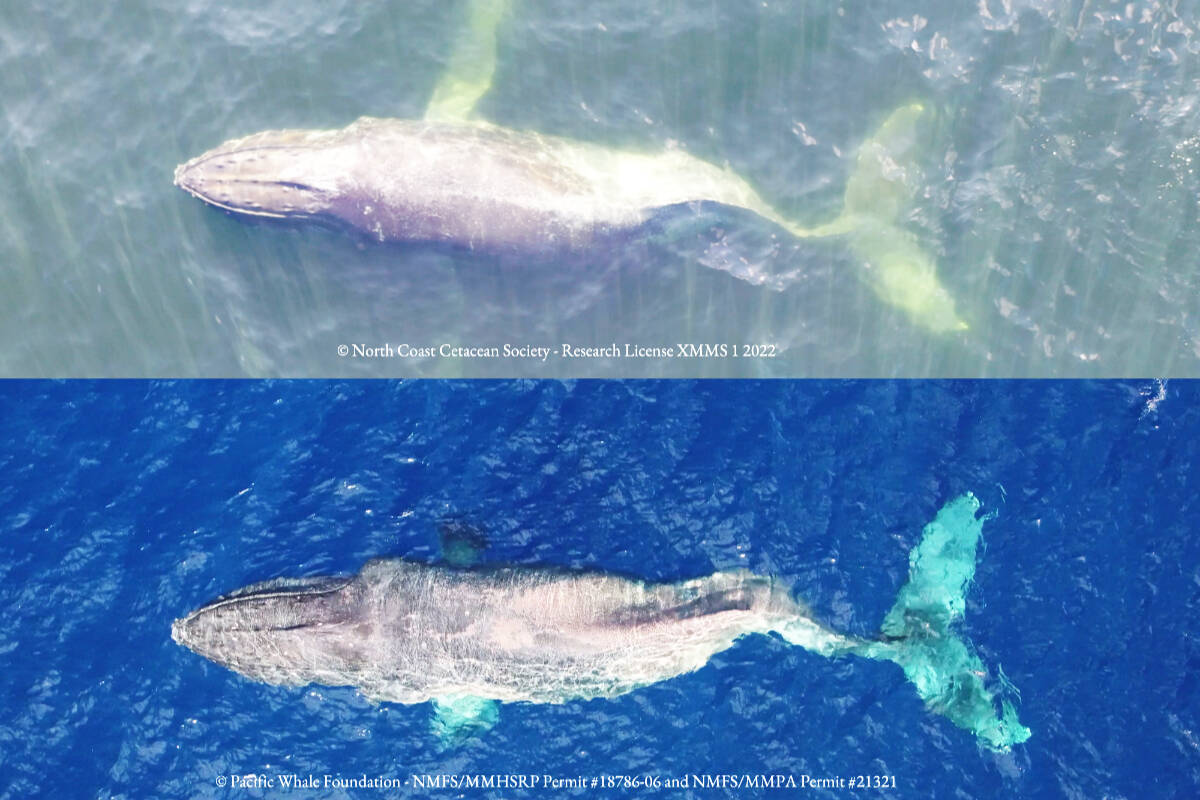A humpback whale appears to have made a difficult journey from waters in northern B.C. to Hawaii, despite an injury leaving her tail almost completely immobile.
BC Whales, a non-profit that researches and protects cetaceans along B.C.’s north coast, saw the female humpback travelling past a research station on Fin Island, less than 150 kilometres south of Prince Rupert on Sept. 7.
Using a drone they were able to get aerial footage of the whale and saw that her back, from dorsal fin to fluke, was curved in an “S” shape.
“We surmised that such an abnormal contortion could be the result of severe blunt-force trauma from being hit by a large boat,” BC Whales stated.
Almost three months later, on Dec. 1, the Pacific Whale Foundation documented a whale with a similarly deformed spine off the coast of Maui in Hawaii.
Staff identified the humpback as “Moon,” based on unique markings on her fluke. When she was seen earlier in the fall by Fin Island, researchers were not able to see the unique pattern because the whale did not lift her tail. Therefore, they could not properly identify her.
Moon was known to spend time in B.C. waters so staff from Hawaii reached out to their Canadian colleagues.
“When the images from Maui were shared with us, we knew immediately that this was likely the whale we had photographed — now over 3,000 miles away,” BC Whales stated.
“The harrowing images of Moon’s twisted body in Maui stirred us all. Not only was she likely in considerable pain, but she had somehow migrated thousands of miles across the North Pacific to her Hawaiian breeding grounds without being able to propel herself with her tail.”
The journey left her “completely emaciated” with whale lice. BC Whales do not believe she will make it back to B.C. again.
B.C. waters are nutrient-dense, so Moon migrated between the north to feed and southern breeding waters. In 2020, she was seen with a calf, passing on the tradition of migrating between these feeding and breeding grounds.
“We will never truly understand the strength it took for Moon to take on what is regrettably her last journey, but it is on us to respect such tenacity within another species and recognize that vessel strikes lead to a devastating end,” BC Whales wrote.
The non-profit is calling for more slow-down zones in known whale hotspots. They are also asking all boaters, regardless of the size of their vessel, to “stay alert, slow down and wait” when they think there is a whale close by.
More tips and information for boaters to help protect marine life are available at www.seeablowgoslow.org.
Kaitlyn Bailey | Local Journalism Initiative Reporter
Send Kaitlyn email
Send The Observer email
Like the Haida Gwaii Observer on Facebook
Follow us on Twitter

